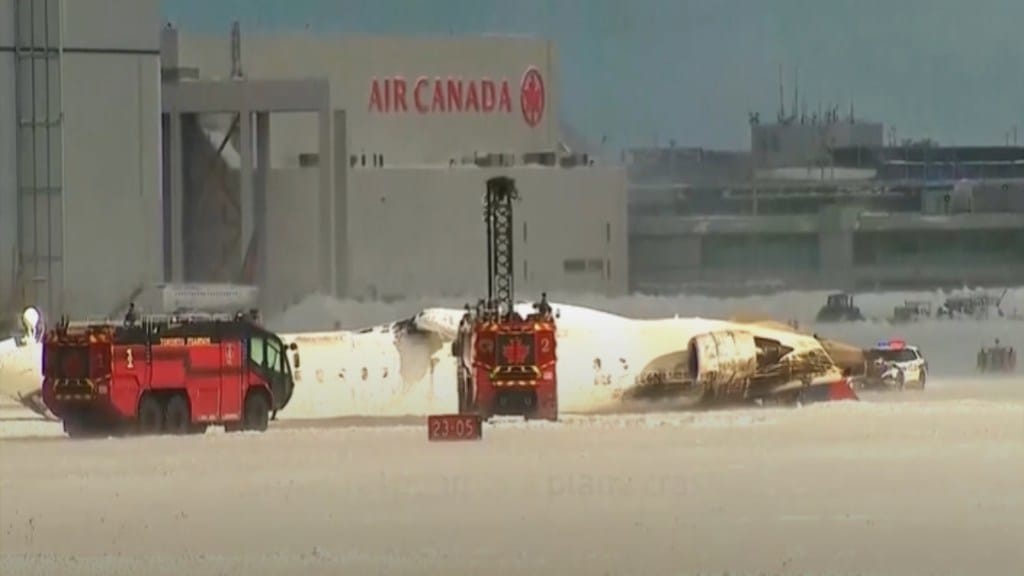A Delta Airlines jet with 80 people on board, including 76 passengers and four crew members, was involved in a dramatic crash landing at Toronto Pearson Airport on Monday (February 17) afternoon. The aircraft, a Mitsubishi CRJ-900LR, flipped onto its roof during its attempted landing around 2:15 pm. Fortunately, all passengers survived, although 18 individuals were hospitalized with minor injuries, according to airport authorities.
The flight, which had originated from Minneapolis, encountered severe weather conditions, including blowing snow and gusting winds of up to 40 mph (65 kph), as it approached the runway. Despite normal communication between the pilot and air traffic control throughout the approach, the landing went awry, causing the aircraft to veer off course.
A viral video circulating on social media captures the moment of impact and the plane flipping over during the landing.
La vidéo du crash de l’appareil de Delta Airline à Toronto hier pic.twitter.com/S6vEZmi10T
— Mardochee Buhendwa (@BuhendwaX) February 18, 2025
All about the Delta Airlines jet
The plane, a CRJ900 aircraft operated by Endeavor Air, was 16 years old and made by Bombardier, with GE Aerospace engines. It can carry up to 90 passengers, though at least one wing was detached following the incident, according to footage shared after the crash. Canadian authorities are investigating the cause of the crash, but details remain unclear.
A passenger, John Nelson, posted a video on Facebook showing emergency responders spraying water on the overturned aircraft on the snow-covered tarmac. Nelson described the landing as unusual, stating the plane hit the ground sideways before flipping upside down. He mentioned that passengers had to help each other escape, with some needing assistance.
Weather conditions at time of Delta Airlines jet crash
At the time of the crash, Toronto Pearson was experiencing high winds and subzero temperatures, following a weekend snowstorm that dumped over 8 inches of snow at the airport. Flight data showed the Delta aircraft landed at 2:13 pm. local time after an 86-minute flight. Weather reports indicated gusty crosswinds and blowing snow at the time of landing.
Despite Toronto Pearson Fire Chief Todd Aitken’s claim that the runway was dry with no crosswind conditions, aviation experts disagreed. US aviation safety expert John Cox noted the average crosswind during landing was 19 knots (22 mph), which can cause pilots to adjust speed, vertical, and lateral profiles to counter gusts.
Toronto Pearson resumed operations after the incident, though airport delays are expected due to runway closures for the investigation.

